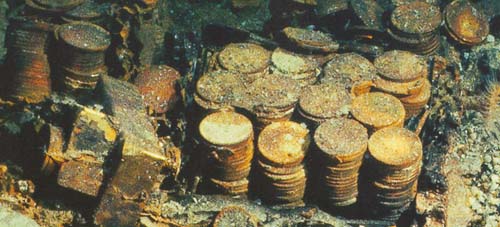That's impossible since, according to our DiogenesLamp it was Civil War Republicans who first brought corruption to America.
Before that everybody was as pure as the driven snow, says DiogenesLamp.
PeaRidge: "With overproduction in the mid-west, the wheat market collapsed, causing an economic depression in the West."
From peak (1855) to trough (1858), grain prices did fall 60% causing some serious problems.
However, overall result of the Panic of 1857 was a 23% reduction in business activities.
That is hardly a "collapse".
For comparisons: the recession of 1854 reduced the economy 18%, the Panic of 1857 23% and the recession of 1861 15%.
Of the three, 1857 was slightly more severe, but none were relatively long-lived or deep.
PeaRidge: "Northern politicians at the time fraudulently used the panic as an excuse to promote their tariff policies that would be detrimental to the recovery."
The much reduced Tariff of 1857 was set before the Panic and indeed was (wrongly) blamed for the panic.
That 1857 tariff was described as:
- "...possible because it did not represent a victory of one section over the other; nor did it produce a clear division between parties.
Its supporters included Democrats, Republicans, and Americans; representatives of northern merchants, manufacturers, and railroad interests; and spokesmen for southern farmers and planters.
Opposition came largely from two economic groups: the iron manufacturers of Pennsylvania and the wool growers of New England and the West"
However, after the Panic protectionism became more popular than ever, finding expression in the Morrill Tariff adopted in 1861, only after its strongest opponents departed Congress.
PeaRidge: "As a result, 4,932 U. S. firms eventually failed."
You don't say what kind of firms those were, but here's what we know about them:
- By 1857 about 8 million Americans were non-farmers.
- Of those, about 1.5 million worked in 140,000 factories, an average of 10 workers per factory.
- Even if we assume (wrongly) that all 4,932 business failures in 1857 were "factories", that's still only 3.5% causing unemployment among about 50,000 workers.
Hardly a "great depression".
- However, a large percentage of these factory workers were women & children, so their unemployment would not necessarily cause family crises.
PeaRidge: "...SS Central America sailed directly into the path of a severe hurricane.
The ship carried $1,000,000 in commercial gold and a secret cargo of 15 tons of California gold valued at $20 per ounce ($9,600,000).
New York banks were waiting for the gold to meet depositor withdrawal demands."
Not quite.
According to this source, SS Central America carried 10 tons of gold valued as $2 million at the time.
The loss did contribute to the Panic of 1857, however it was partly covered by insurance.
Btw, the wreck was found in 1988 and has not been fully recovered.
The gold is estimated at over $100 million in today's values.
PeaRidge: "Due to the fact that Southern cotton and tobacco producers took European manufactured goods in trade and were thus not dependent upon specie for payment, they were further removed from the financial crisis.
Production increased, and the South prospered."
Thank you for confirming elements of my argument:
- First, the Deep South prospered greatly during the 1850s.
- Cotton & tobacco producers did indeed deal directly with their European customers and were not forced to go through Northeastern businessmen.
- Those same producers also took European goods in trade, presumably paying tariffs at the same ports they shipped from.
PeaRidge: "In the North, there was a flood of people to the industrial cities because of the failure of the farms as a employment option.
Many believed that the great jobs and money were to be made in the factories."
Statistics for the period show US farmers still outnumbered non-farmers nearly two to one.
In total the US had about 2 million farms, average size of 200 acres on which 15 million people lived.
Yes, the importance of non-farm employment was growing, but still nothing like today.
PeaRidge: "The father worked, the mother worked and the kids worked.
Most often it still was not enough wage earning to survive without debt to the Company Store."
What seems unnatural to us today (children working in factories) was then considered less unnatural since farm children also worked to help their family farms.
Indeed, many non-farm families worked just long enough to save up money to buy their own farms.
So "working class" was not necessarily a permanent status.
SS Central America:

